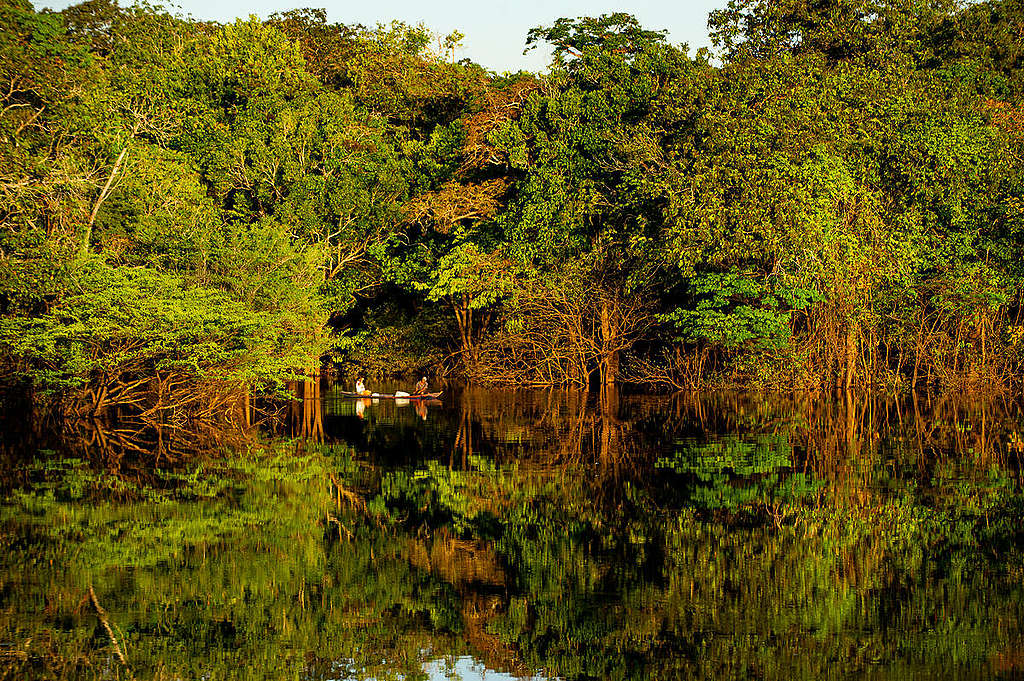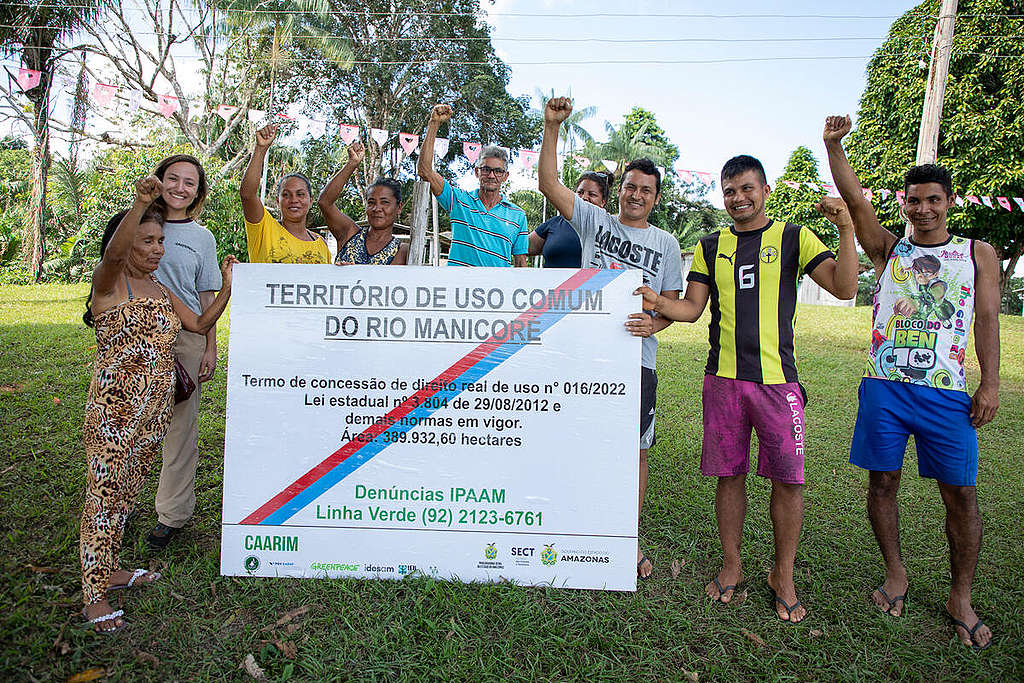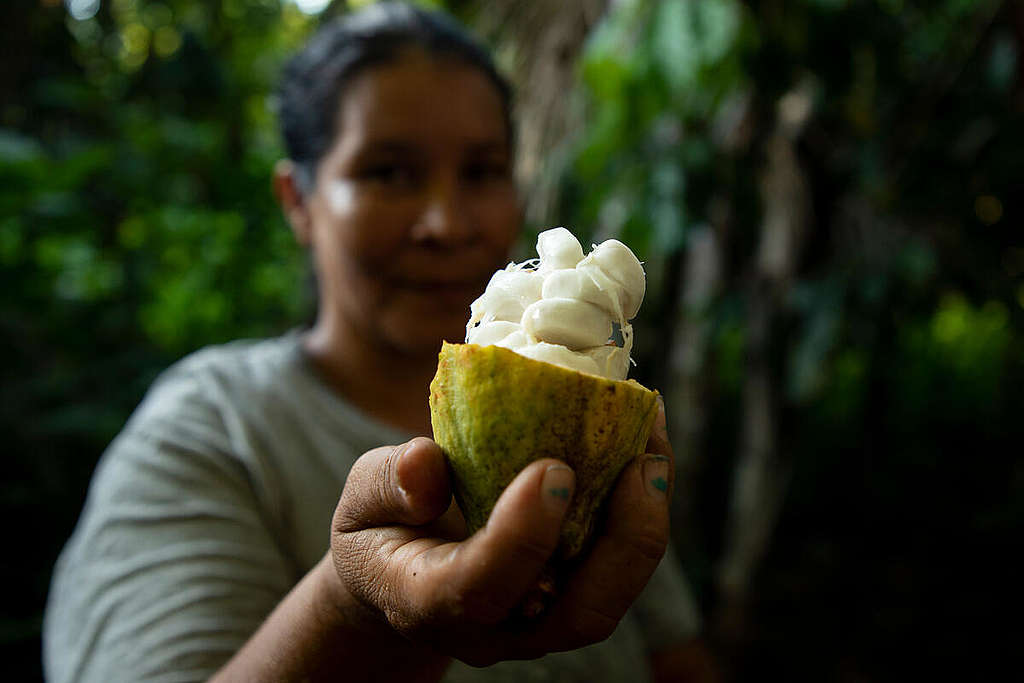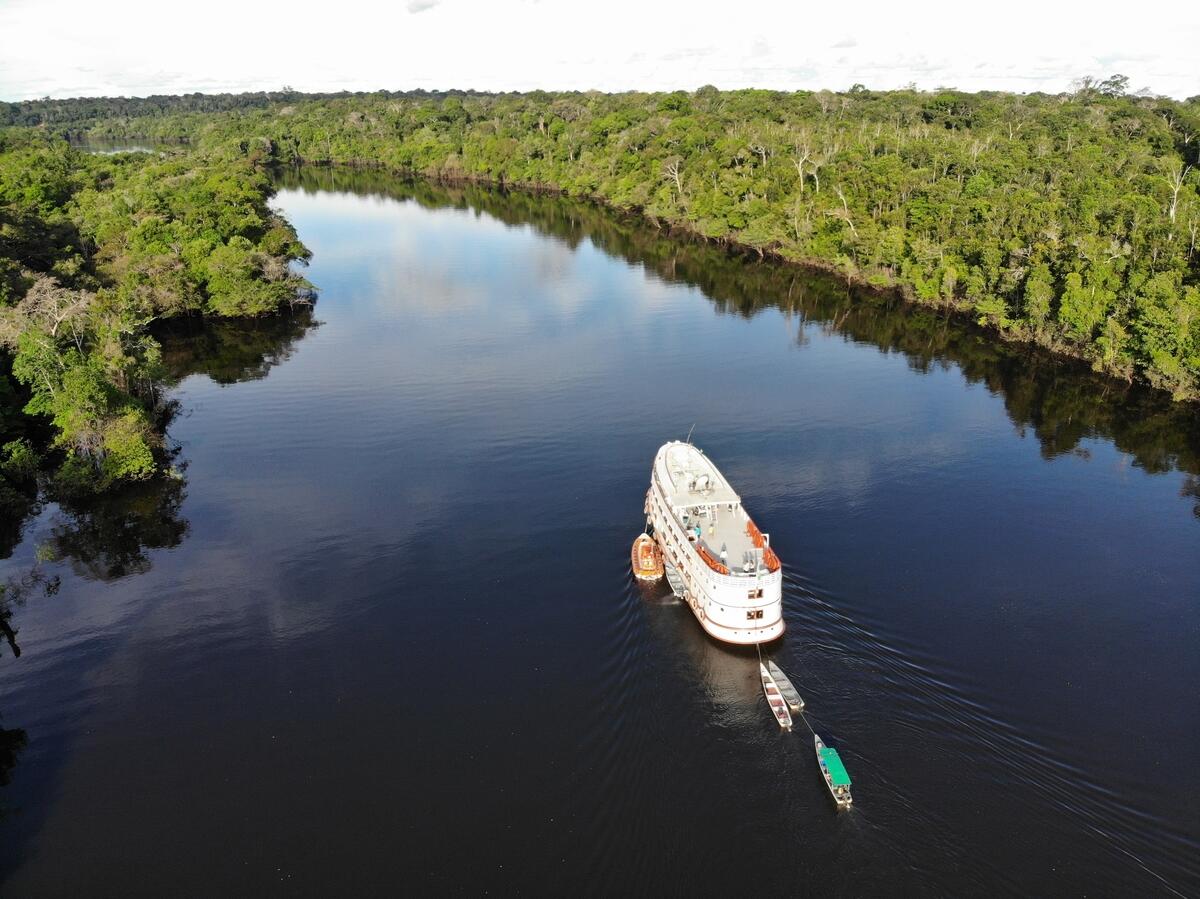This story was originally posted by Greenpeace Brazil, in Portuguese.
Returning to the Amazon and witnessing its splendor renews our strength to fight against the destruction and violence that consume us and the forest.

I recently returned from a 21-day trip lived intensely in the Amazon rainforest that, even at this distressing moment in Brazil, managed to bring back a gleam in my eyes that had faded.
It faded because our recent work at Greenpeace Brazil has so often shown the sad part of the Amazon, like when we carried out an expedition in states of Amazonas and Rondônia in September last year to document the impacts of fires on people’s lives and the environment, or when I was in the Pantanal in 2020, when more than a quarter of the biome was burned in a span of only a few months.
On a day-to-day basis, we have witnessed the dismantling of Brazilian environmental management with decrees and decisions here and there by the Bolsonaro government. In response, we have dedicated ourselves to blocking this agenda of destruction however and wherever we can. There have been many online mobilizations, for example on Twitter against land grabbing bills (PL2633 and PL510), which aims to legalize the invasion of public lands. We have been partially victorious in this battle so far, as we have managed to prevent many of these proposals from being approved. Still, there are those moments of utter helplessness, like when colleagues and supporters are murdered. And despite all this, it is up to us to keep fighting even harder for this scenario to change, and for it to change soon.
For two years we have been hoping to carry out an expedition to showcase the Amazon We Need, which was postponed because of the pandemic. In this very important and decisive election year for Brazil and the Amazon, we embrace the challenge of talking more about the thriving and just Amazon that we must build, strengthening the hope that still resides in us.
On the way from Manaus, the capital of the Brazilian state of Amazonas, to the expedition destination on the Manicoré River, we saw many contrasts. From the exuberance and strength of the Madeira River, to an absurd number of mining dredges. It was on this journey that we learned that Indigenous rights expert Bruno Pereira and British journalist Dom Phillips had disappeared. This forced us to face stark contrasts yet again, this time between the feeling of sadness and revolt, with the certainty that we need to remain strong in the fight to reverse this path of destruction and violence that has been fostered in the Amazon by Brazil’s anti-environment government.
The purpose of the expedition was to support the struggle of the communities of the Manicoré River, which for 16 years have demanded the protection of the forest and recognition of their rights to the territory. In addition, the expedition provided a platform to research the biodiversity of the region, which is still understudied. Due to deforestation, we are losing species that science has not even had time to discover! This support for the scientific community in Brazil comes after we have supported master’s and doctoral researchers who study biodiversity with scholarships in previous years.

Our home for almost a month was a regional boat that housed approximately 60 people on board: Our group consisted of about 15 researchers linked to the National Institute for Research in the Amazon (INPA), and partner institutions, the Greenpeace team and members of the Manicoré River communities. During the expedition we received journalists and German actor Mortiz Jahn who fell in love with the Amazon.
The natural beauty of the forest was always very captivating. We stayed in a very remote part of the Amazon, perhaps the most remote area I have ever been to. We were about five hours away from the municipality of Manicoré, up the river. At our work site, five trails were opened to facilitate the field work of researchers who were studying birds, mammals, botany, fish, reptiles and amphibians. We also were joined by a paleontologist who was looking for fossils of already extinct animals that lived in that region. Community members on board participated in some of the scientists’ activities and a fantastic exchange between academic and traditional knowledge was established. I was in the midst of a profound exchange of knowledge.
In addition, we had the opportunity to talk a lot with local leaders and visit some communities. During our community visits, we learned about the traditional way of life which is built around a more balanced and healthy relationship with nature. Moreover, this traditional way of life brings income to these populations. We were able to follow the process of harvesting andiroba oil, açaí, cocoa as well as cassava production. We saw fully functioning agroforestry systems in practice. These are already known and academically recognized methods for increasing productivity and have environmental benefits.
The Amazon that we need already exists in places like this. But there remains a need for greater political will, and more public policies, to make this sustainable and beautiful Amazon the dominant reality.
It was especially encouraging to see the passion with which both groups — the scientists as well as the local community leaders — persevere in their struggle and their work. The scientists remain very excited and passionate about their work despite receiving almost no funding or incentives for scientific research during Bolsonaro’s presidency, this undaunted urgency is quite an act of resistance. Meanwhile, the communities of the Manicoré River have struggled for 16 years despite the slow pace of government. They too remain undaunted even after such a long time of watching the threats to the territory increase due to interests who prefer destruction to conservation.
For me, the most inspiring thing was that women leaders are at the forefront of this movement. Over lunch while talking to Dona Cléia, director of the Central de Associações Agroextrativistas do Rio Manicoré (CAARIM), she recalled her years of struggle for the creation of a Sustainable Development Reserve (RDS). She also told me with pride of a recent achievement: In March this year, the government of the state of Amazonas delivered to CAARIM a Concession of Real Right of Use (CDRU), a document legally acknowledging the territorial rights of the local communities. This is not the same as having the territory declared an RDS, but it was a fundamental step toward preventing new invasions from occurring. Nevertheless, there is still a lot of work ahead.

During the expedition, Greenpeace Brazil even helped in the installation of some signs to identify the area covered by the CDRU. Another important aspect of the expedition is that the biodiversity studies conducted by the scientists with us. In addition to providing a quick inventory of what exists in that region, and potentially leading to the documentation of new species, this research will also help reinforce the proposal to create an RDS.
But not everything is positive, despite the recent achievement, the area, its biodiversity and communities, continue to face risks. After all, we are talking about a region where deforestation has advanced voraciously, where public lands are being invaded, grappled and deforested, and worse, where local governments have encouraged the advancement of a destructive development model.
The forest, its people and the climate are running out of time. That is why we will continue in this struggle to reject an Amazon marked by land grabbing, deforestation, violence against forest defenders. Instead, we will help nurture an Amazon without deforestation, with guaranteed rights, that respects traditional ways of life and that offers real opportunities for development for the populations that live in the forest.
Instead of the economy of destruction that prevails in the region and devours the forest, Brazil needs to make a transition to an economy that coexists with the forest and respects its people.
For Bruno, for Dom, who I had the honor of meeting and working with, and for many others who have tried to make the Amazon and the world a better place, for the communities of the Manicoré River and for the peoples of the forest, for our biodiversity, I will continue. We will stand firm in this fight.
Cristiane Mazzetti is a senior forest campaigner at Greenpeace Brazil.
-

The Amazon We Need expedition
The Amazon is an ancient forest, home to incredible animals and unknown species. Indigenous Peoples, traditional communities, and environmental activists are among those who are working to protect it amid…
